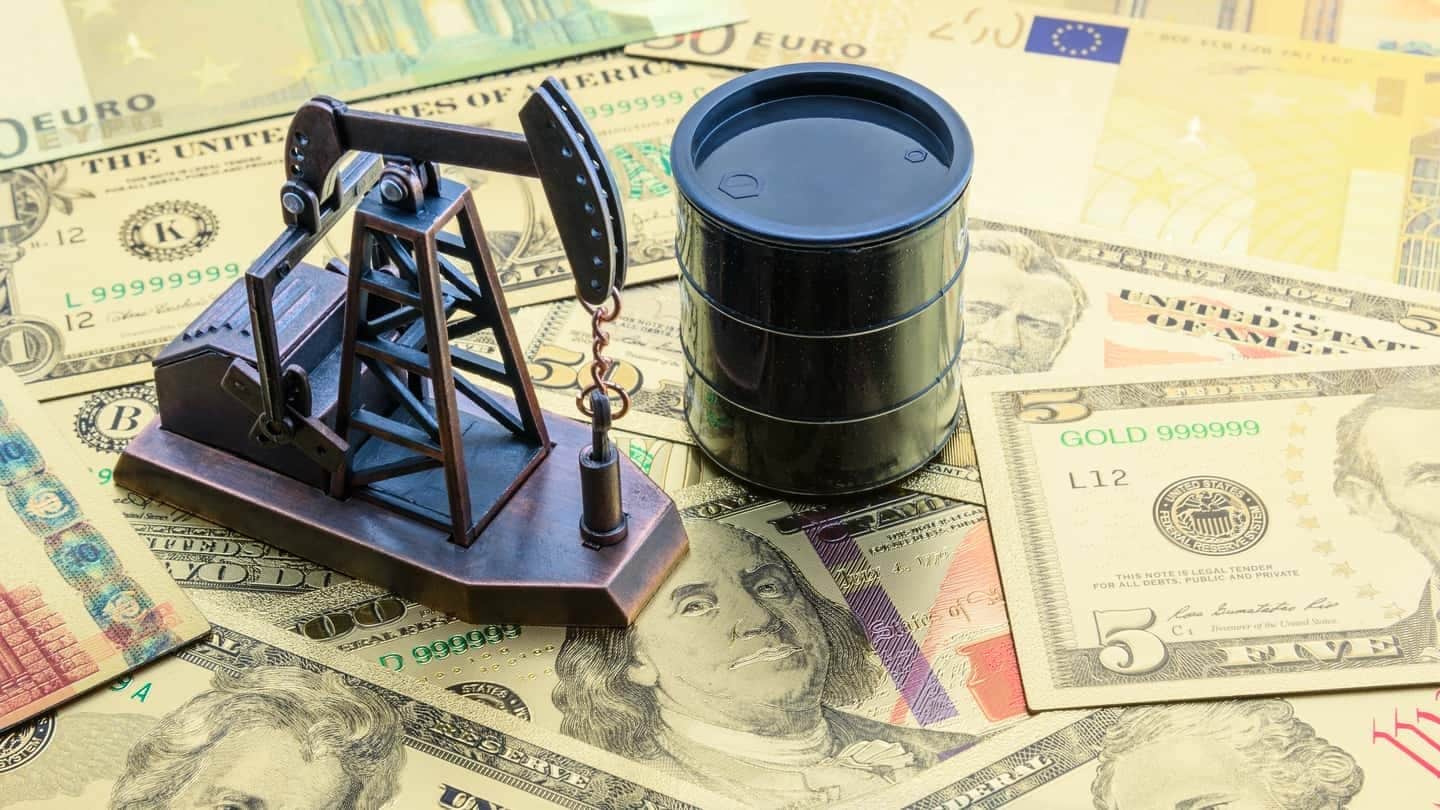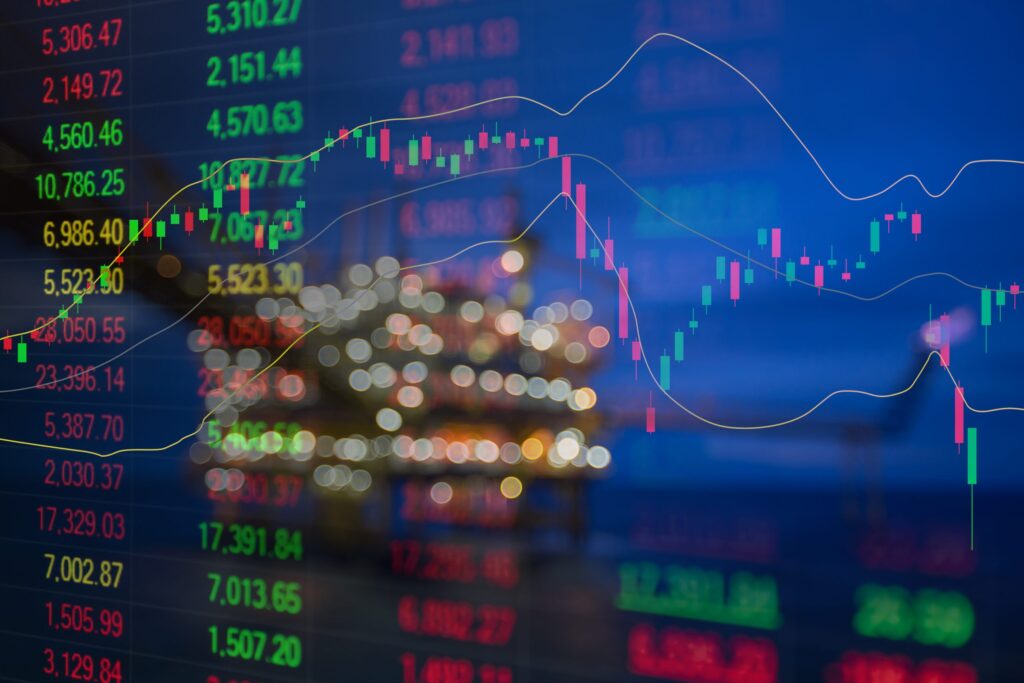
Trade in black gold – it’s a phrase that captures the essence of oil trading, with its allure of immense profits juxtaposed against the perils of volatile markets. The realm of oil trading is vast, intricate, and filled with nuances. Whether you’re an aspiring trader or a seasoned professional, this guide will delve deep, offering insights into proven strategies, highlighting tools to enhance trading decisions, and throwing light on aspects that often stay under the radar. Journey with us as we unveil the multifaceted world of oil trading.
Table of Contents
Fundamental Analysis

Source: purple-trading.com
A robust grasp of fundamental analysis remains pivotal for anyone trading in oil. The method revolves around evaluating the intrinsic value of this black gold by analyzing various economic indicators. These indicators range from production rates to global economic growth and even consumer demand.
Yet, it’s not just about numbers. The essence of fundamental analysis lies in understanding narratives and stories. Unexpected events, such as political upheavals or technological breakthroughs, can drastically shift demand and supply dynamics. Keeping an ear to the ground helps traders stay ahead of such curveballs. To learn more, check out oiltraderpro.org.
Technical Analysis Techniques
Many oil traders employ technical analysis, a method that scrutinizes past market data to forecast future price movements. Through tools like charts and various indicators, traders spot trends and patterns that might indicate where the oil price is headed next.
While some may argue that past performance isn’t indicative of future results, technical analysts believe that market movements, including oil prices, move in predictable patterns. By mastering techniques such as moving averages or resistance levels, traders can make more informed decisions, maximizing potential returns and mitigating risks.
Popular Oil Trading Strategies
When venturing into the realm of oil commerce, one must be equipped with strategies that have stood the test of volatile price swings. Scalping, for instance, is a technique where traders aim to make small profits from minute price changes over a short period, leveraging the liquid nature of the oil market.
Another favored method is swing trading. Here, traders capitalize on ‘swings’ or fluctuations within a broader trend. By identifying the beginning and end of these swings, traders can buy low and sell high, or vice versa, to garner profits.
Risk Management

Source: quartic.co
Venturing into markets without a risk management plan is akin to sailing turbulent seas without a compass. One effective method many traders adopt is setting stop-loss orders. These automated orders limit potential losses by selling a security when it reaches a certain price.
Yet, the risk isn’t solely about potential financial loss. Opportunity costs, or the potential benefits missed when choosing one alternative over another, also play a pivotal role. By diversifying their portfolio or hedging through different commodities, traders can reduce the impact of missed opportunities.
Seasonal Trends and Factors Affecting Prices
Oil prices, much like nature, exhibit seasonal patterns. For example, demand typically surges during winter in Northern Hemisphere countries due to increased heating needs. Similarly, summer often sees heightened demand as travel increases.
Besides seasons, oil prices dance to the tune of various factors. Infrastructure concerns, such as pipeline malfunctions or refinery capacity issues, can restrict supply, causing prices to ascend. On the demand side, global economic health significantly sways oil prices. A thriving global economy boosts demand, pushing prices upwards.
Global Geopolitics and Their Impact on Markets
In the intricate tapestry of oil trading, geopolitics embroiders some of the most unexpected patterns. Conflicts in major oil-producing regions can constrict supply lines, escalating prices. Conversely, peace treaties or trade agreements can open up supply avenues, stabilizing or even decreasing prices.
Beyond wars and treaties, national policies and decisions of major oil producers also play a monumental role. Decisions by organizations like OPEC can either flood the market or restrict supply, sending shockwaves through global oil prices.
Leveraging Options and Futures
For traders wanting to amplify their gains, options, and futures present tantalizing prospects. Options grant traders the right, without the obligation, to purchase oil at a set price, allowing them to capitalize on price fluctuations without holding the actual commodity.
Futures, on the other hand, obligate traders to buy or sell oil at a predetermined price on a specified future date. By gauging market direction accurately, traders can reap substantial profits, even with minimal capital upfront.
Essential Tools for Successful Oil Trading

Source: business-money.com
The toolkit of an accomplished oil trader is a mix of technology and knowledge. Advanced charting software enables traders to visualize and predict market movements, while real-time news feeds keep them abreast of global events that might sway oil prices.
Beyond digital tools, the most invaluable asset remains education. Knowledge repositories, webinars, and workshops equip traders with strategies and insights, molding them into astute decision-makers in an ever-changing market landscape.
Real-life Case Studies
History, as they say, is the best teacher. In 2008, oil prices skyrocketed to an unprecedented $147 per barrel, only to plummet below $40 within a year. Such dramatic shifts were influenced by a mixture of global economic downturns, technological advancements, and geopolitical tensions.
Another noteworthy episode was the negative oil prices witnessed in 2020. Due to a sudden demand drop from the pandemic and storage capacity concerns, traders were willing to pay others to take oil off their hands. Such cases underline the importance of adaptability and foresight in oil trading.
Developing Your Personalized Trading Plan
Every trader is unique, with individual risk appetites, capital availability, and trading goals. Recognizing this, it’s imperative to craft a personalized trading blueprint. This plan should outline trading goals, risk thresholds, and even specific strategies tailored to one’s circumstances.
But creating a plan isn’t enough; sticking to it is equally crucial. Emotions can be a trader’s Achilles heel. By remaining disciplined and adhering to one’s personalized trading plan, traders can navigate the tumultuous waters of oil markets with confidence.
Environmental and Ethical Considerations
In an era of heightened environmental consciousness, the ethical dimensions of oil trading cannot be sidelined. Extracting and consuming oil has undeniable environmental consequences, ranging from greenhouse gas emissions to habitat destruction.
Simultaneously, many economies and livelihoods are deeply intertwined with oil. This creates a moral conundrum: how does one balance the economic benefits against environmental implications? It is here that sustainable trading, which considers both profit and the planet, becomes paramount.
Final Thoughts
Embarking on the voyage of oil trading requires a compass equipped with knowledge, tools, and strategies. The labyrinth of markets is intricate, with myriad factors interplaying in unpredictable ways. Yet, with the right insights and a meticulous approach, traders can not only navigate but also thrive, making the most of opportunities that arise in this ever-evolving domain.







